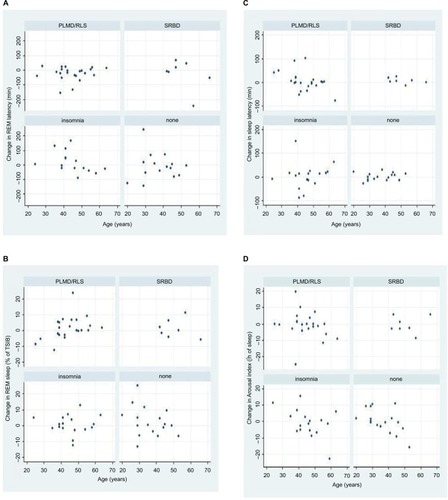Figures & data
Table 1 Baseline characteristics
Table 2 Hypnogram parameters: night 1 and median change to night 2 (∆: night 2–night 1)
Figure 1 In some sleep parameters, age-related changes between the two nights were found.
Abbreviations: AI, arousal index; FNE, first night effect; MS, multiple sclerosis; PLMD, periodic limb movement disorder; REM, rapid eye movement; RLS, restless legs syndrome; SOL, sleep onset latency; SRBD, sleep-related breathing disorder; TSiB, time spent in bed.

Table 3 Spearman’s rank correlations of the FNE with age within each subgroup
